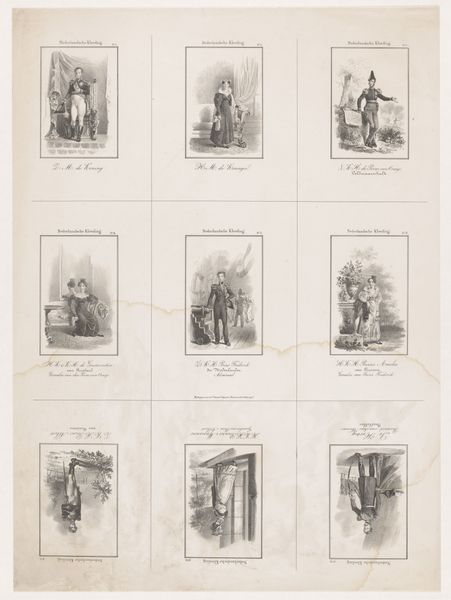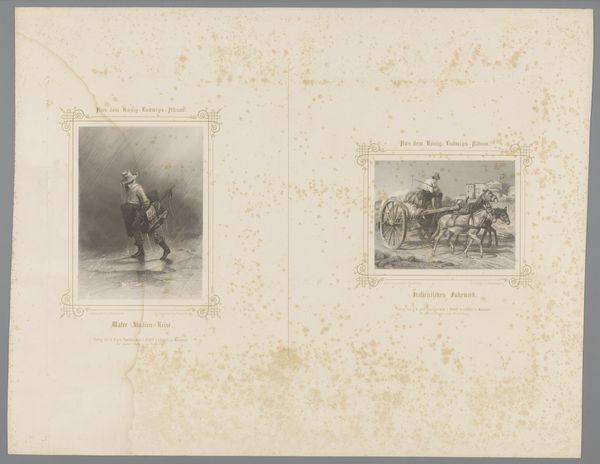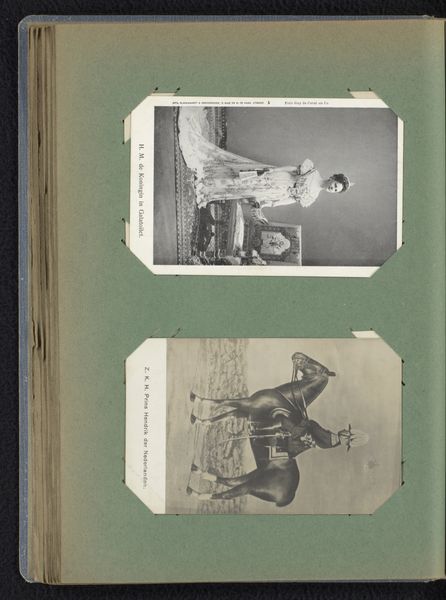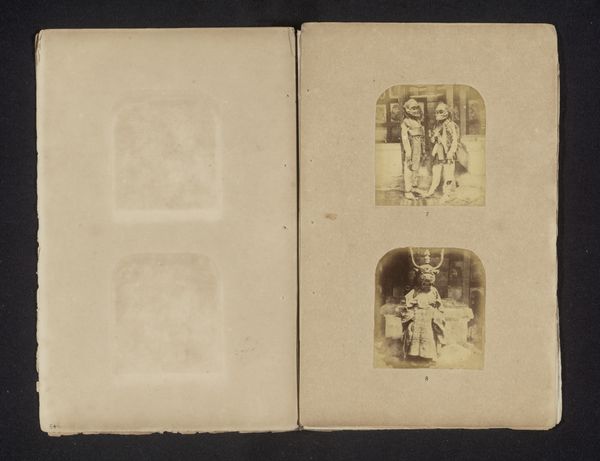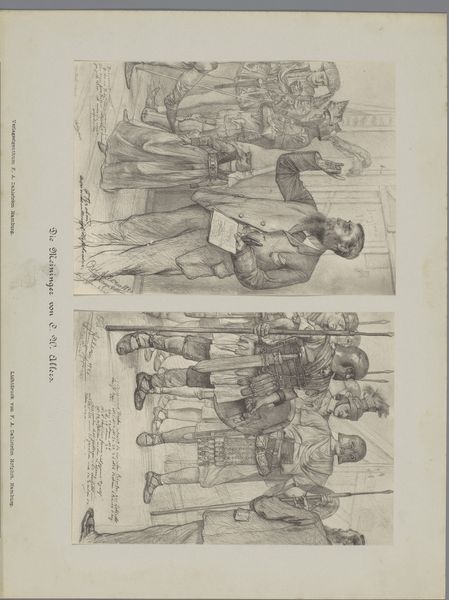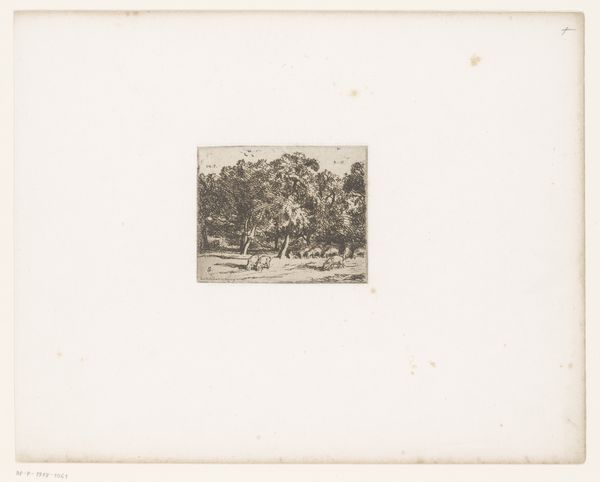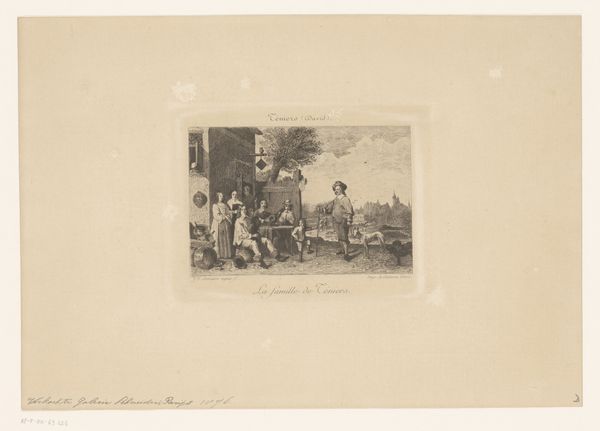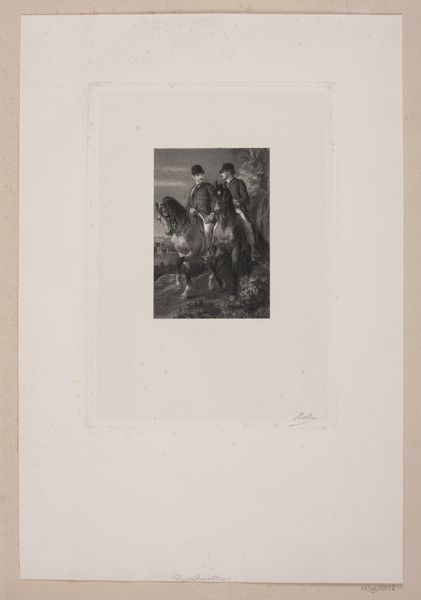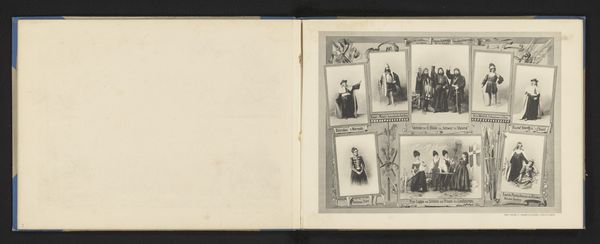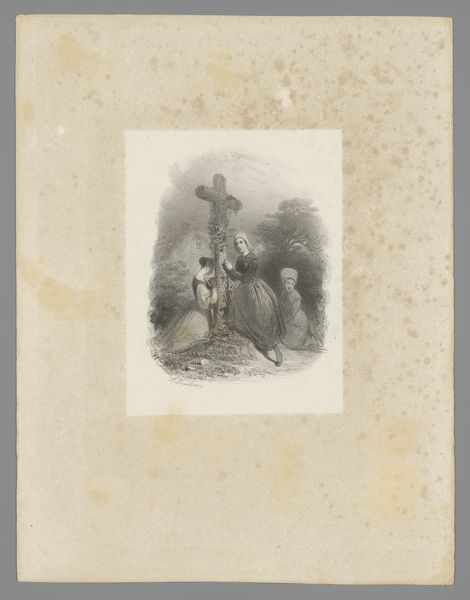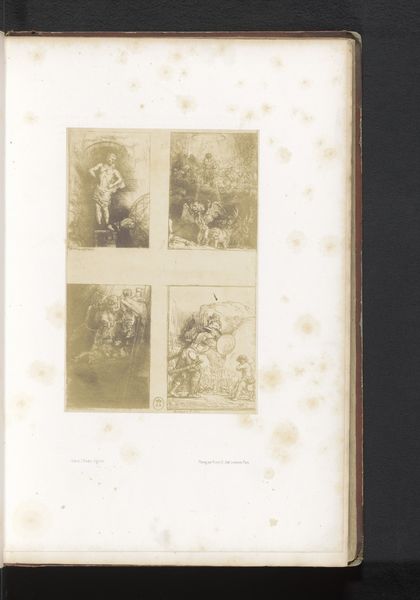
drawing, print, paper, engraving
#
portrait
#
drawing
# print
#
pencil sketch
#
paper
#
pencil work
#
genre-painting
#
engraving
#
rococo
Dimensions: height 123 mm, width 85 mm, height 122 mm, width 86 mm, height 128 mm, width 91 mm, height 124 mm, width 101 mm, height 120 mm, width 82 mm, height 122 mm, width 86 mm, height 443 mm, width 275 mm
Copyright: Rijks Museum: Open Domain
Curator: Right, let's dive into this sheet of figures from 1768, "Blad met figuren in verschillende kostuums" by Jean-Baptist Leprince. It’s held here at the Rijksmuseum. He used engraving to bring these characters to life on paper. What jumps out at you? Editor: Immediately? A certain theatrical air, wouldn't you say? Almost like a costume study for a play. There's a deliberate, almost performative quality to how each figure is posed, despite the relatively humble medium of a pencil sketch turned print. It feels both intimate and staged. Curator: Indeed! Leprince was quite fascinated with capturing the nuances of dress and gesture. Given the period – the Rococo era – this emphasis on elegance and theatricality makes perfect sense. Think of the court of Versailles, the operas, the masked balls. He's giving us a little slice of that world, but perhaps also commenting on it? Editor: That’s it! It is commenting. Notice how many of the figures are identified as being 'Tartar' figures from Moscovia. I wonder to what extent this engraving is part of the Enlightenment’s broader obsession with mapping and categorizing peoples beyond the continent, maybe a commentary on Western Europe's own self-image through these constructed “others.” Curator: Absolutely. Leprince spent time in Russia and was deeply inspired by his experience. This is him wrestling with cultural representation, which is heavy when you realize the power of the western gaze is already taking shape at this moment in history. What impact might the circulation of such images have had? Editor: I wonder if the Rococo fondness for ornamental extravagance may have ironically been channeled towards a more ethnographic pursuit, if not entirely escaping from Orientalist biases? It brings out the odd position of visual art serving documentary, representative, and aesthetic functions simultaneously, Curator: Yes! And he achieves this complexity through relatively simple lines, a sort of casual observation but with the intent to portray and share different cultural costumes with the people of his time. It is an exercise of cultural sharing as much as one of aesthetic finesse. It speaks volumes about our enduring interest in understanding and interpreting 'the other.' Editor: So, while seemingly a collection of quaint character studies, this print holds a mirror to a much wider world. I love how Leprince captures fleeting moments of identity through clothes; these sartorial performances reveal layers of meaning that speak to an historical era of great ambition but also one fraught with tension. Curator: Exactly! A little reminder that clothing speaks volumes.
Comments
No comments
Be the first to comment and join the conversation on the ultimate creative platform.

